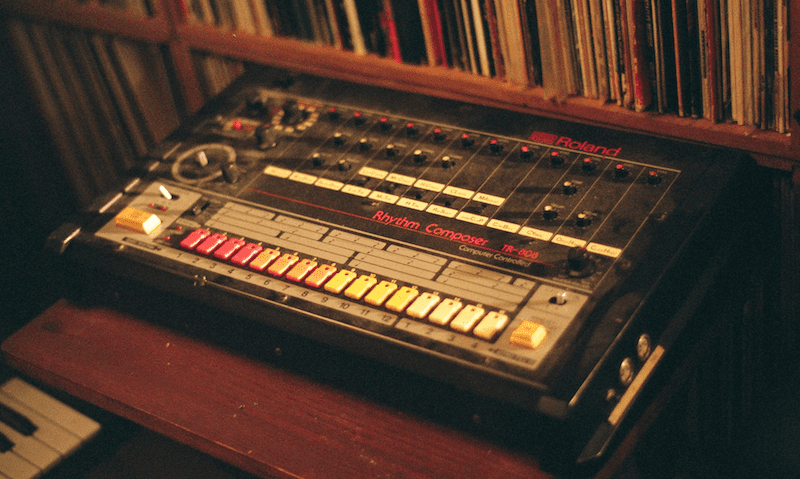Our in-house beatsmith turns his attentions to a DJ Sneak style jackin’ house workout in our latest beat deconstruction.
Beat Dissected is a regular series in which we deconstruct drum patterns, showing you how to recreate them in any DAW. Just copy our grid in your own software to recreate the loop.
Here’s the beat we’re building today:
Spec
Tempo
125-128Swing
70-80%Sounds
dirty raw analogue drumsStep 1
Start with a basic four-to-the-floor pattern. Choose a kick with some punch, snap and crunch that still retains a solid low end. If you can’t find a sample with the right flavour, get layering! Additional ghost hits with a lower velocity help fill out the groove and supply the turnaround variation. (Note the illustrative grid is set at 32 divisions in this step.)
Step 2
Now for the clap and snare: the defining ingredients of a jackin’ groove. First up, add a subtle clap/snare hybrid on each beat except the last, reinforcing the kick. Now for the jack… This is generated by the additional raw cardboard-style synthetic clap that hits on 2, 5, 9 and 13 in bar 1 and then 3, 5, 9 and 11 in bar 2 to drive the beat forward. Invest time in finding the right sample for this element: it is the defining sound in the beat. Claps can be nudged to the left by a couple of miliseconds to loosen up the groove.
Step 3
Now introduce open hi-hats to the offbeats. You can use a single sound for this if you want, but to generate additional life and interest, we’ve used the same sound tweaked very slightly to give two variants that share the duties – Open Hat 2 has slightly different attack and release settings, and is tuned down very slightly too. Add an additional open hat at a lower velocity on the 16ths for variation. (Note that the grid in the image shows 32 divisions again.)
Step 4
The beat is pretty much there. A final step, to reinforce the all-important jack, is to add in a dirty analogue percussive hit (our one has a low and mid-range thud). Adding this last percussive sound on the 15th (and 11th is useful) helps emphasise the swing, powering the beat ever-forward.





05.59 PM
Love these break downs of the breaks.
Easy to follow hard to master techniques.
Thank You. =)
11.47 PM
These broken down beats are fantastic! Really appreciated. I love this Sneak one. Do you do requests?
11.57 PM
Send your suggestions in via the contact page and we’ll see what we can do…
http://www.attackmagazine.com/about/contact/
02.12 AM
Thank you, this is great
11.13 PM
Glad to have found you guys! This is a great thing you are doing breaking down the drums. It gives artist a solid platform to build off. Keep’em coming
05.23 PM
could you shed some light on when to use 8 beat vs 16 beat quantizing?
03.03 PM
any chance of the samples used here as you gave away in later series? I cant find drums like this anywhere!
05.58 PM
Jack – sorry, we don’t have the samples for this one any more. We’ve got some more house beats coming soon and we’ll be giving away all the samples from now on.
JJ – it’s fairly simple. 8th-note swing or quantisation is only appropriate if your notes (or drum hits in this case) only play on 8th-notes. If not then quantising to an 8th-note setting will drag everything from the 16th-notes onto the nearest 8th-notes. The easiest way to understand it is to give it a try in your DAW and hear the effect it has. 16th-note swing is much more common in dance music simply because of the way beats tend to be programmed. You can find a lot more info here:
http://www.attackmagazine.com/technique/passing-notes/daw-drum-machine-swing/
03.56 AM
Hey Guys…quick question on this one. In step 2 you mention putting the clap/snare hybrid on every beat except the last, but the image doesn’t seem to reflect that. Am I misinterpreting something here? Thanks for these great tutorials btw!
02.29 PM
What kind of percussion instrument is it that you use in the last step you describe as “thud”?
11.30 AM
Hey there, please scuse my ignorance but I’m not sure how to translate swing percentage into Ableton, also are you meaning 16th or 8th notes?